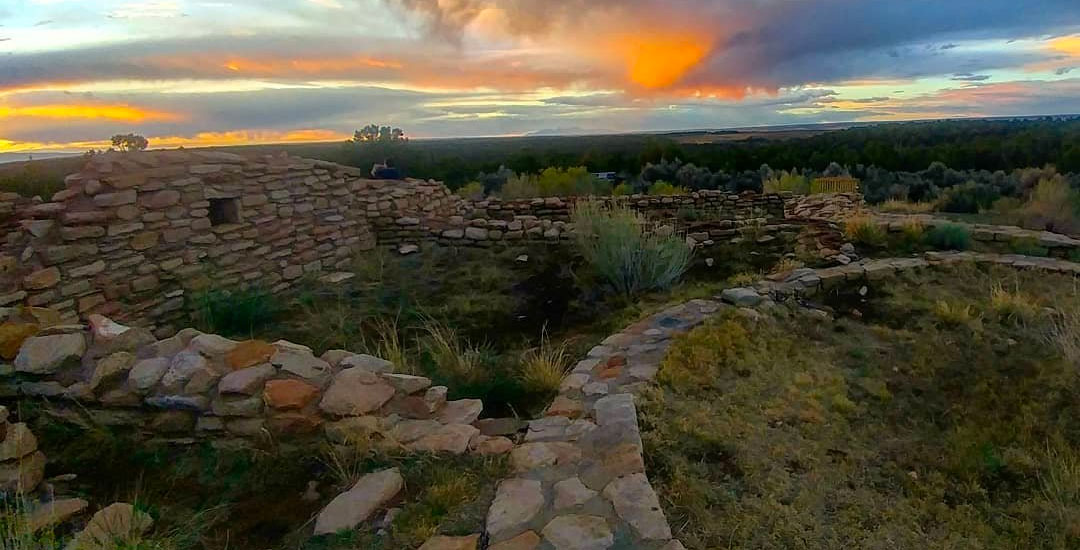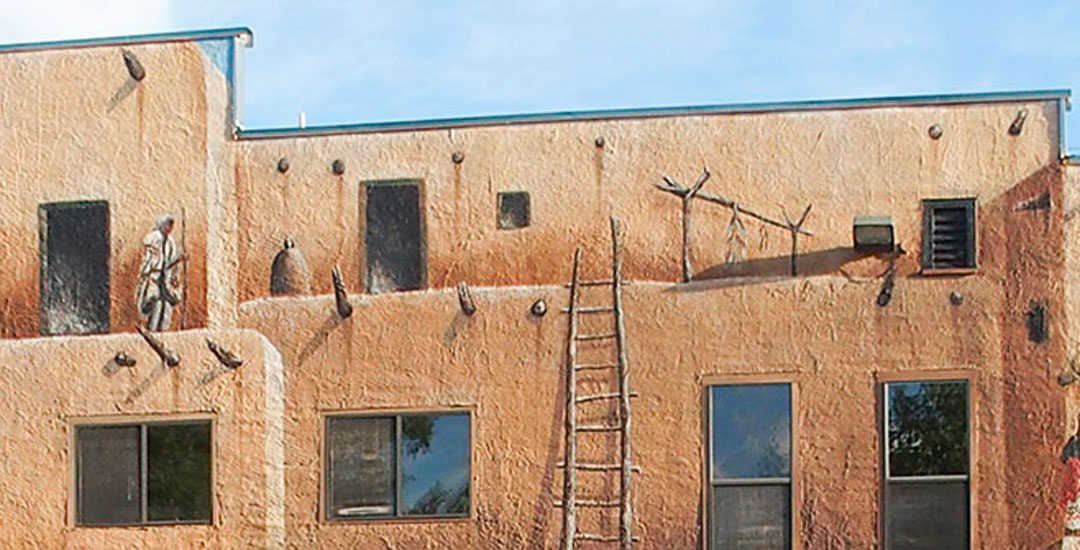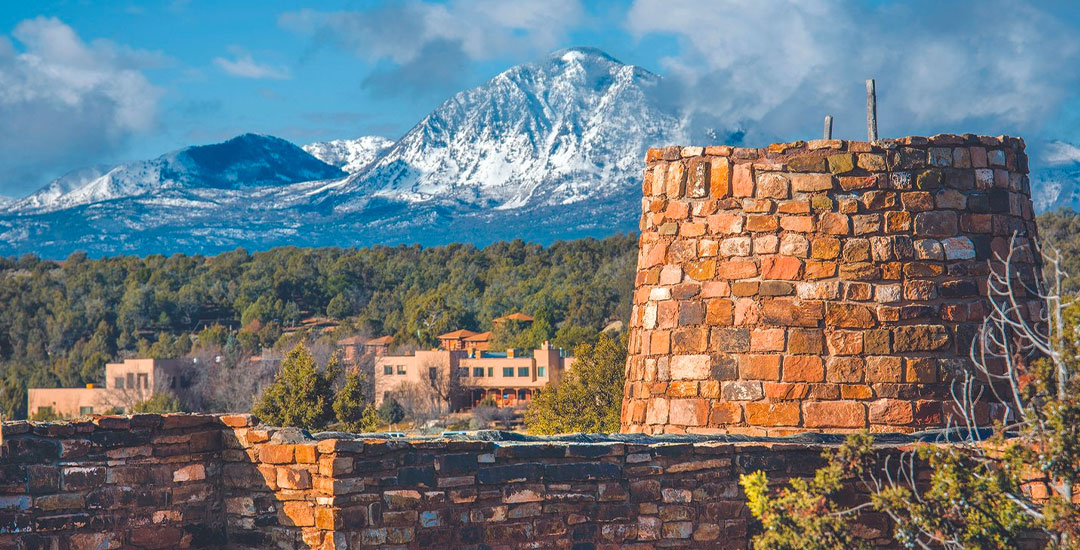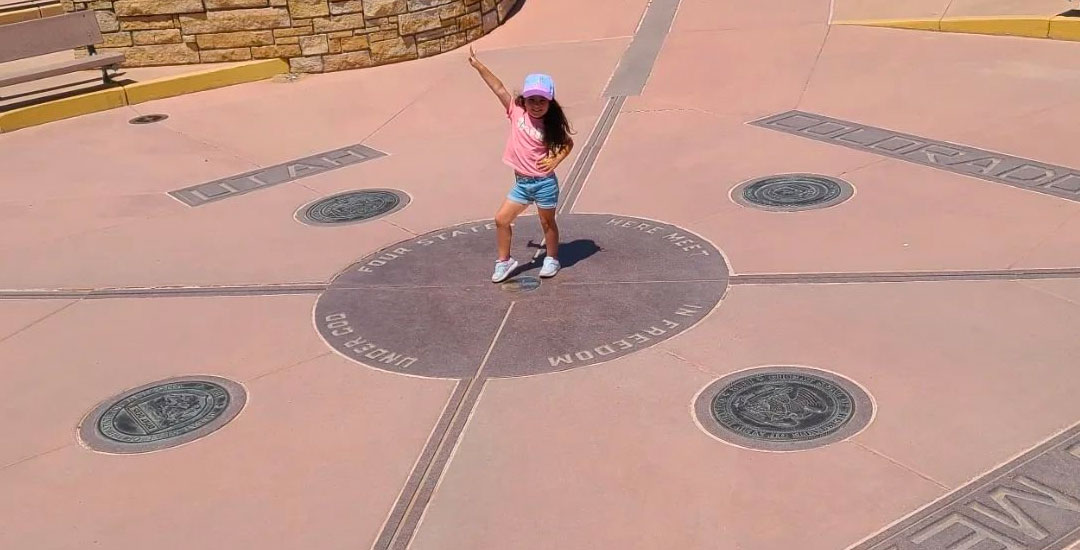Trail of the Ancients
The Trail of the Ancients Scenic Byway traverses a portion of the American Southwest that, once experienced, cannot easily be forgotten.
You will return home with memories of sandstone landscapes carved by wind and water into shapes of every kind, and it is common for those who have traveled through the Four Corners area to return many times. Geologic drama, tough and complex plant and animal life, the relationship between water and rock all provoke the mind and imagination to learn about the origins of this ancient place. Most compelling is the long occupation by native human communities, present over a time spectrum rarely intact elsewhere. Extending from Paleolithic society to Ancestral Puebloans to nomadic Navajo, Apache and Ute tribes to the impact of European settlers, these native communities endure. Visitors find century-old traditions still honored, and new practices and art forms constantly evolving.
 Travel through the archaeological heartland of America while crossing the beautiful and diverse landscapes of the Colorado Plateau. The Trail of the Ancients highlights both remote archaeological sites and significant cultural and historic sites in Southwest Colorado, and we are still the only byway in America known as an archaeological byway! Trail of the Ancients is totally dedicated to archaeology and, unique to this byway, the traveler must get out of the car to truly experience everything the byway has to offer.
Travel through the archaeological heartland of America while crossing the beautiful and diverse landscapes of the Colorado Plateau. The Trail of the Ancients highlights both remote archaeological sites and significant cultural and historic sites in Southwest Colorado, and we are still the only byway in America known as an archaeological byway! Trail of the Ancients is totally dedicated to archaeology and, unique to this byway, the traveler must get out of the car to truly experience everything the byway has to offer.
Explore Some Stops Along the Trail

Mesa Verde National Park
Fourteen centuries of history are displayed at Mesa Verde National Park. Established by congress in 1906, Mesa Verde is the first national park set aside to preserve the works of humankind.

Lowry Pueblo
Named for homesteader George Lowry, this site is typical of the medium-sized pueblos that once dotted the Montezuma Valley.

Hovenweep National Monument
Hovenweep, a Ute Indian word meaning “deserted valley,” was established as a National Monument on March 2, 1923. Hovenweep is located on the Colorado/Utah border, just an hour west of Cortez.

Ute Mountain Tribal Park
Part of the Ute Mountain Ute Indian Reservation, the Ute Mountain Tribal Park has been set aside to preserve remnants of the Ancestral Puebloan and Ute cultures. It has been selected by National Geographic Traveler as one of “80 World Destinations for Travel in the 21st Century”, one of only 9 places in the United States to receive this special designation.

Canyons of the Ancients Visitor Center & Museum
The Canyons of the Ancients Vistor Center and Museum is a federal research center, curation facility, and museum with approximately three million records, samples, and artifacts from public lands throughout southwestern Colorado. It is also the visitor center for the Canyons of the Ancients National Monument (CANM).

Cortez Cultural Center
Housed in a 1909 historic building, the Cortez Cultural Center contains a wealth of information on archaeology and American Indian culture. The Center’s Museum displays interpretive exhibits on the Basketmaker and Pueblo periods of the Ancestral Pueblo people.

Crow Canyon Archaeological Center
Crow Canyon Archaeological Center is a not-for-profit organization dedicated to long-term archaeological research on the Ancestral Puebloan occupation of the Mesa Verde region.

Galloping Goose Museum
The Galloping Goose Railcar and Museum and the Four Corners Monument are the only historic, rather than prehistoric, stops along the Colorado portion of the Trail of the Ancients.

Four Corners Monument
The Four Corners Monument marks the quadripoint in the Southwest United States where the states of Colorado, Arizona, Utah and New Mexico meet — the only point in the United States where the boundaries of four states intersect.
McElmo Creek Flume
A visit to the McElmo Creek Flume brings the story of water on the Trail of the Ancients into the 19th and 20th centuries. An irrigation system to water the Montezuma Valley was built in the late 1890s, and included 150 miles of open ditches and 104 flumes to carry the water across arroyos such as McElmo Creek. This is the last surviving Flume on that system.
The McElmo Creek Flume is located approximately 4 miles east of Cortez on Highway 160, on the way to Mesa Verde National Park.
The wayside stop is most easily accessed heading east from Cortez. The parking lot includes a kiosk describing the effort to restore and preserve the Flume, and a short handicap walkway leads to an overlook of the Flume. Additional panels there tell the story of the water history of the Montezuma Valley, from Ancestral Puebloan times to the 21st century.
There are no services available at the McElmo Creek Flume. Public restrooms are available at the Ute Rest area, 3 miles further east on highway 160.
The Culture Continues
From approximately A.D. 1 to 1300, the Ancestral Puebloans inhabited the Four Corners Area.
Their primary crops were corn, beans, and squash. They domesticated the turkey, and continued to gather wild plant foods and hunt game in order to supplement their diet.
The Ancestral Puebloans are known for their remarkable building techniques. From pit houses to multi-storied cliff dwellings, these structures remain as a tribute to their remarkable architectural abilities. The Ancestral Puebloans were also highly skilled potters, and beautiful decorated bowls, ladles, mugs, and other intricate ceramic items have been found in sites throughout the region.
There are many theories about why the Ancestral Pueblo people gradually abandoned the area by A.D. 1300. Their movements seem to be related to drought, climatic change, soil erosion, or overuse of the area’s resources. We do know that the modern day Pueblo People are their descendants.
Plan your trip today
Start planning your vacation to Mesa Verde Country with our free travel planner.


